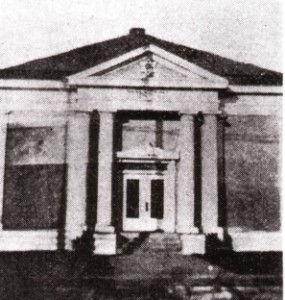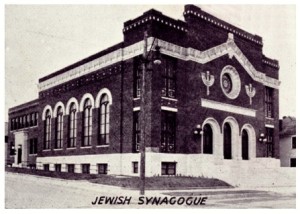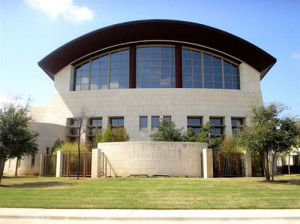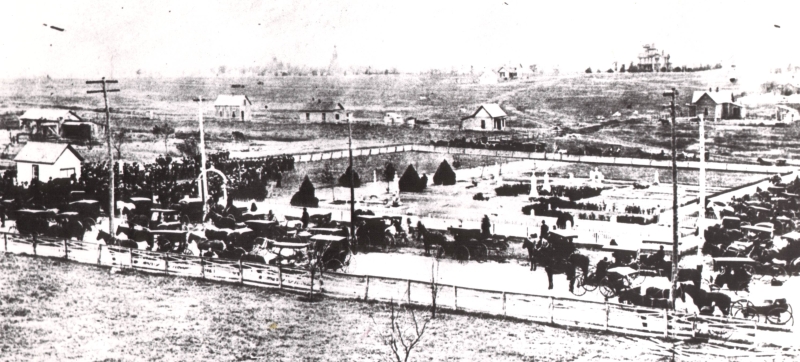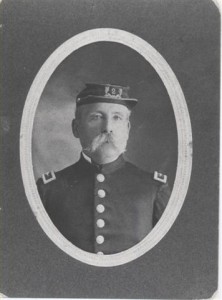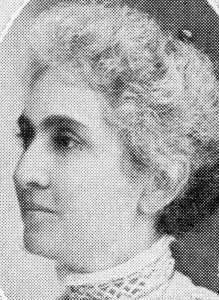Beth-El Congregation of Fort Worth, Texas
Fort Worth
Fort Worth, which began in 1849 as a military post, was a rowdy frontier town on the Chisholm Trail, 40 miles east of cosmopolitan Dallas.
Nicknamed “Cow Town,” it attracted cowboys, outlaws, and entrepreneurs, among them a handful of Jews who opened dry goods stores.
By 1900, Fort Worth boasted far more saloons, brothels, and gambling dens than religious institutions.
Yiddish-speaking, East-European Jews began arriving in the 1880s and started an Orthodox shul, Ahavath Sholom, in 1892.
Other Jews in Fort Worth, who had grown up in America, continued to shun organized religion. Efforts to start a religious school or to hold services in English repeatedly faltered.
Finally, in the autumn of 1902, plans to launch a Reform congregation took root.
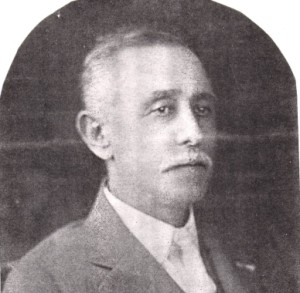
Henry Gernsbacher, credited as the main founder and organizer of Beth-El Congregation, Fort Worth, TX
The chief organizer was Henry Gernsbacher, a New Orleans native and kitchen-supply merchant with four grown sons.
He called a series of organizational meetings at the Knights of Pythias Hall.
The first officers were: Sam Levy, President, Isidore Carb, Secretary, and Henry Gernsbacher, Treasurer.
By the first day of Rosh Hashanah, the new congregation, Beth-El, had 43 charter members.
None were newcomers to America. Four were native Texans; 7 were from elsewhere in Dixie; 3 were from the Midwest; 3 had fought in the Civil war—one for the Confederacy and two for the Union.
They wanted services in English, no yarmulkes, and a prayer book that opened from left to right.
Beth-El Congregation officially affiliated with the Reform movement in 1907.
Rabbi Solomon Philo acted as an advisor for the first meetings and was hired “temporarily” to lead the congregation during its first High Holy Day services.
As with many other synagogues in the West, the men were content to rent a hall for services.
However, the women wanted a permanent building. They started a “sinking fund” and raised $500 toward construction of a synagogue.
Their best fundraiser was a series of potluck suppers during the annual Fort Worth Fat Stock Show & Rodeo.
The First Building, 1908 – 1920
The first Beth-El Congregation building was on the corner of Fifth and Taylor Streets in downtown Fort Worth.
It was sold in 1920 to a publishing company. Today it is a church parking lot.
The Second Building, 1920 – 2000
Located at Broadway and Galveston Streets, the new temple was envisioned to be a synagogue and community center.
Costs held back ambitious plans for a gym, billiards room, rooftop garden, and two dance halls.
A large mortgage was necessary to complete the building, and the ravages of Prohibition (several congregants were in businesses requiring liquor) and the Great Depression hindered regular payments to the bank.
The mortgage was finally paid off in 1946. But 1946 was also the year that a three-alarm fire gutted the interior of Beth-El.
It was decided to rebuild the synagogue rather than start from scratch at a new location.
Harry B. Friedman, a member, won the bid for constructing the new structure, which he did as a labor of love.
When he presented his itemized bill, the $8,500 cost of the marble was missing. It was his family’s gift to the synagogue.
In 1962 the Danciger Memorial Education Wing was added to the site.
The Third Building, 2000 –
Located at the 4900 Briarhaven Road, seven acres of land were purchased by the Rosenthal family and transferred to the Beth-El. The Jewish population had migrated to that section of Fort Worth.
Groundbreaking took place in 1998 and the dedication in 2000.
“Built of large, rough white limestone blocks, the complex features a series of walls, courtyards, and open space that become progressively smaller as worshippers approach the Holy of Holies.”
–Hollace Ava Weiner
Source
- Hollace Ava Weiner, Centennial Book, Beth-El Congregation, Fort Worth, Texas, 1902 – 2002 (Fort Worth, TX, Beth-El Congregation, 2002).
All photos are from the archives of Beth-El Congregation.
